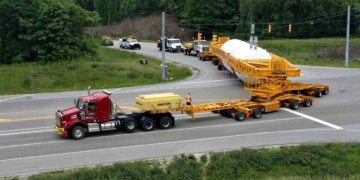Buying a home is a big financial step, and issues can be costly. That’s why a survey matters. But choosing the right one can be confusing, especially with terms like Level 1, 2, and 3. Each level offers a different depth of inspection and is suited to different property types.
You’ll want a clear guide to help you avoid overpaying or missing vital issues. Keep reading to discover which level fits your situation best.
What Is a RICS Survey?
A RICS survey is an inspection carried out by a surveyor registered with the Royal Institution of Chartered Surveyors (RICS). It checks the condition of a property before purchase. RICS surveys are split into three main levels, each offering a different degree of detail.
The goal is to flag structural issues, safety risks, or potential repair costs before you commit. If you want the RICS home survey levels explained in simple terms, it comes down to how much detail you need based on the property’s age, condition, and type.
Level 1: Basic Condition Check
This is the most basic survey. It’s designed for newer homes in good condition. It provides a traffic light-style rating system to highlight problems, but doesn’t include advice on repairs or tests of systems like electrics or drainage.
If you’re buying a fairly new flat or house with no history of issues, Level 1 may be enough.
Level 2: Homebuyer’s Report
Level 2 is suitable for homes in reasonable condition that may need some updates. It includes more detailed checks of key areas like the roof, windows, and damp risks. You also get repair advice and information about problems that might affect the value of the property.
This level is most popular among buyers because it balances cost and detail. It won’t open up walls or lift floorboards, but it gives you a good overview of common defects.
Level 3: Full Building Survey
A Level 3 survey is the most thorough and is usually needed for older, larger, or visibly run-down properties. The surveyor spends more time inspecting and gives a detailed report, including potential repair timelines and estimated costs.
This is important if you’re buying a property that’s listed, significantly altered, or in poor condition. It helps you avoid surprise renovation bills later.
Which One Do You Need?
Your choice depends on the property. If it’s modern and well-kept, Level 1 might do. If it’s older but seems okay, Level 2 is safer. If it’s worn or complex, go with Level 3.
Think about your budget, too. Surveys cost money, but they can save you far more by highlighting unseen problems before you commit.
Final Thought
Choosing the right RICS survey is about picking the right level of protection for the home you’re buying. Whether it’s a clean new build or a charming Victorian fixer-upper, there’s a survey to match.
If you’re unsure, speak to a qualified surveyor. The right choice now could save you a fortune down the line.













